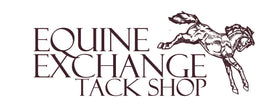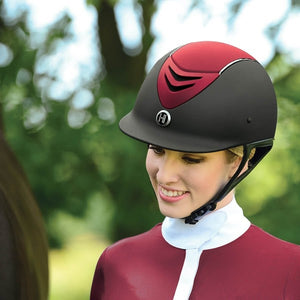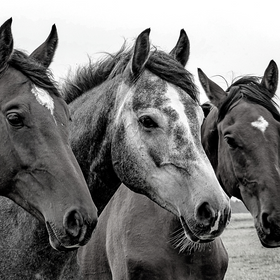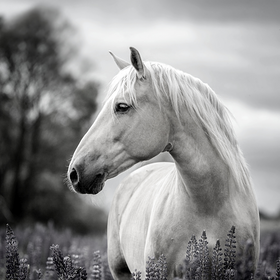
What to Look For in a Helmet
We’ve seen mountains of research demonstrating the benefit of wearing a helmet while riding, but when it comes to picking out a helmet at the tack shop, it’s easy to get overwhelmed with options. In addition, prices on helmets range from very inexpensive to very expensive. What is the difference? Fit, safety and style are the three main areas of consideration when you are purchasing a helmet. We have created a quick overview of why these areas are important and what you need to know before purchasing a helmet.
Fit
A properly fitting helmet is incredibly important. Many higher-end helmet makers will go through a thorough measuring of your head to ensure the helmet fits correctly. All helmets will fit a bit differently for each person. It is a good idea to try several different brands to discover the brand that fits your head shape comfortably. Ideally, you want a helmet that drops down slightly in the back to protect the back of your head.
Once you have determined what brand feels comfortable, you’ll want to ensure you are picking the right size. The helmet should have a snug fit, enough to move your eyebrows when wiggled, but not so snug that it gives you a headache. Some brands allow you to add or remove some of the padding inside the helmet for a better fit. A loose helmet can be dangerous as it will shift when you ride, potentially blocking your view or moving during a fall and not providing protection to the area it was meant to. The chin strap should also be snug, allowing a finger between your chin and the strap.
Safety
Many helmets are certified for safety through the American Society for Testing and Materials (ASTM standards) or by the Safety Equipment Institute (SEI). You’ll want to make sure the helmet you are purchasing meets one of these safety standards. You don’t have to spend a bunch for a safe helmet, even reasonably priced helmets are safety certified.
Style
Over the last 15 years, we’ve seen so many fun new styles of helmets for horseback riders. While there are certain standards for showing in different disciplines, most riders are able to express their personalities through fun helmets. Alternatively, you can purchase a fun schooling helmet and a separate helmet for showing that fits your discipline requirements. Some helmets even have panels that can be switched out for a different look! Outside of colors and fun patterns, helmets also come in
Though many Western riders historically did not wear helmets, we are seeing a rise in helmet use across all Western disciplines. World Champion barrel racer Fallon Taylor felt so passionately about rider safety that she designed a helmet with Troxel to appeal to Western riders looking for style and safety.
Helmets After A Fall
Helmets should always be replaced after any fall where the helmet hit the ground. Helmets are designed to help absorb impact, but after a fall their ability to do so will be diminished. Helmets should also be replaced every 5 years (or sooner with very regular use). The material in the helmet designed for impact will become less effective after a 5 year period. So as much as it seems unnecessary, replacing your helmets will keep you safer.





